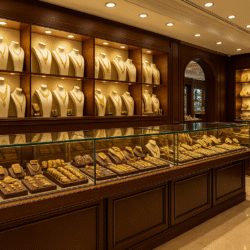In busy industrial environments, construction zones, transport hubs, warehouses, and outdoor worksites, visibility can be the difference between a safe shift and a serious accident. This is why hi vis workwear is a mandatory safety requirement across many industries in Australia and around the world. Designed to help workers stand out in complex and low-light environments, high visibility workwear plays a critical role in preventing accidents and ensuring compliance with workplace safety laws.
As industries evolve and safety regulations become stricter, choosing the right hi vis clothing has never been more important. Whether you’re a business owner responsible for worker protection or a tradesperson wanting to stay safe onsite, understanding hi-vis standards, materials, and proper usage can dramatically improve personal safety and reduce risks.
As safety technology continues to evolve, workplaces are embracing smarter high-visibility solutions. Modern garments now integrate UV-block fabrics, anti-static properties, fire-resistant materials, and ergonomic design features for enhanced user comfort. Some advanced systems even include LED illumination and micro-prismatic tape for superior night-time reflectivity. Employers and workers should stay updated with changing industry standards and PPE innovations to ensure maximum protection. Remember — investing in premium hi vis clothing isn’t just about compliance; it’s about protecting lives, boosting productivity, and maintaining a safer, more professional work environment. Visibility is your first defence — never compromise on quality or compliance.
What Makes Hi-Vis Workwear So Important?
High-visibility clothing is engineered to make workers stand out through:
- Bright fluorescent colours that enhance daytime visibility
- Reflective tape that increases night-time visibility
- Safety-certified materials that meet PPE standards
The bright colours and reflective technology ensure workers are easily seen by:
- Machinery operators
- Vehicle drivers
- Crane and forklift operators
- Other workers in high-traffic zones
Simply put, hi vis workwear ensures you are visible — and therefore protected — in fast-moving, high-risk environments.
Key Industries That Require High-Visibility Workwear
While hi-vis is commonly associated with construction, many sectors mandate it for safety compliance:
| Industry | Common Hi-Vis Use |
| Construction & Civil Works | Road work, building sites, infrastructure projects |
| Transport & Logistics | Drivers, dock staff, freight handling, forklift zones |
| Warehousing & Manufacturing | Assembly lines, machine areas, loading docks |
| Mining | Surface and underground operations |
| Rail & Road Maintenance | Traffic control, emergency response, repair crews |
| Utilities & Electrical | Powerline technicians, gas workers, water services |
| Waste Management & Recycling | Truck operators, collectors, sorting facility staff |
Any environment where visibility can be compromised requires high visibility workwear for legal compliance and worker protection.
Australian & Global Safety Standards for Hi-Vis Clothing
To ensure durability and visibility, hi vis clothing must meet recognised safety standards. In Australia and New Zealand, hi-vis garments follow AS/NZS 4602.1:2011 and AS/NZS 1906.4:2010 for materials and design.
Key requirements include:
✅ Fluorescent or Day-Use Fabric for daylight worksites
✅ Retro-reflective Tape for night-time or low-light work
✅ Combined-Use Garments for day and night visibility
✅ UV-resistant materials for outdoor use
✅ Colour compliance — typically neon yellow, lime, or orange
Proper certification ensures your high visibility workwear is not just bright — but compliant, tested, and safe.
Types of Hi-Vis Workwear
Different environments require different garment types, including:
- Hi-vis shirts and polos
- Reflective vests
- Hi-vis jackets & rainwear
- Work pants with reflective strips
- Coveralls & overalls
- Lightweight breathable hi-vis for hot climates
Workplace conditions — weather, lighting, job type — determine the appropriate hi vis workwear to wear.
Key Features to Look for in Quality Hi-Vis Clothing
Not all hi-vis is created equal. Choosing the right gear means looking for:
🔸 Reflective Tape Quality
Highly reflective silver tape or segmented tape improves mobility and visibility.
🔸 Fabric Durability
Heavy-duty, tear-resistant, and fade-proof fabrics ensure long life — especially in tough trade environments.
🔸 Breathability & Comfort
Moisture-wicking materials and mesh ventilation keep workers cool in harsh climates.
🔸 Weather-Appropriate Designs
Insulated jackets for winter, lightweight polos for hot days, waterproof outerwear for rain.
🔸 Compliance Labels
Always check that high visibility workwear is safety-certified before use.
When Should Hi-Vis Be Worn?
Hi-vis must be worn whenever:
- There is moving machinery or vehicles nearby
- Work happens outdoors or near traffic
- Visibility is low (night shifts, fog, tunnels, warehouses)
- Communication and safety signalling rely on visibility
Even a moment of low visibility can lead to hazardous situations — PPE should always be worn consistently.
Tips for Maintaining Hi-Vis Safety Gear
To stay compliant and safe, follow these guidelines:
✅ Wash according to garment instructions
✅ Replace faded or worn-out garments
✅ Inspect reflective tape frequently
✅ Avoid harsh chemicals that damage fluorescent colour
✅ Store clean and dry to maintain reflectivity
Damaged or dull hi vis clothing can reduce visibility, making replacement necessary for continued protection.
Final Thoughts
In fast-paced work environments, seeing and being seen can save lives. From construction sites to logistics hubs and public service sectors, hi vis workwear is a crucial layer of protection. Investing in quality high visibility workwear ensures compliance, reduces risk, and demonstrates commitment to workplace safety standards.
Whether you’re operating heavy machinery, working roadside, or moving materials in a dim warehouse, the right hi vis clothing improves safety, awareness, and confidence on the job. Staying visible means staying safe — and safety always comes first.


